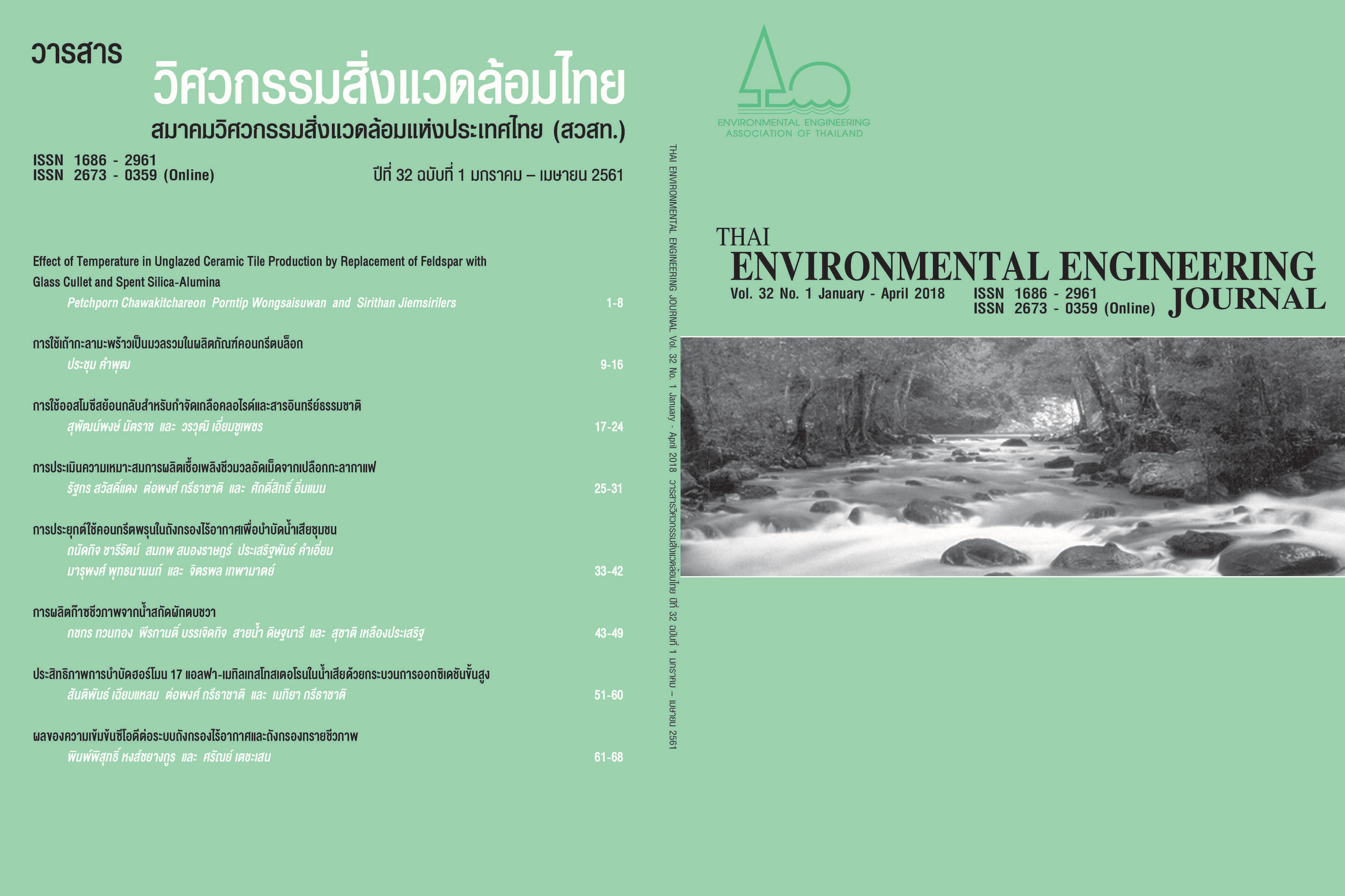Using Reverse Osmosis for Chloride Salts and Natural Organic Matter (NOM) Removal
Main Article Content
Abstract
This research was to study the performance of chloride salts and natural organic matter (NOM) removal using reverse osmosis (RO). Different chloride salts (i.e. magnesium chloride, calcium chloride, sodium chloride, potassium chloride) and NOM were tested under crossflow reverse osmosis membrane. Different ionic strengths of 0.01 M and 0.05 M were determined with different operating pressures of 20, 40, and 60 psi. Experimental results revealed that increased ionic strengths caused reductions of solution flux and salt rejection measured from conductivity, due to increased osmotic pressure from salt concentration at the membrane surface. Increased operating pressures increased solution flux, increasing pressure differences across the membrane surface. NOM concentration of 2 mg/L caused a greater flux decline with similar ionic strength, accumulating NOM at the membrane surface. The rejections of natural organic matter measured by UV254 nm were relatively high more than 95%. Additionally, increased ionic strengths with NOM composition caused a slight reduction in NOM rejection, possibly due to reduced charge repulsion between positively charged chloride salts and negatively charged NOM.
Article Details
References
[2] Bodzek, M. 2013. Inorganic micropollutants removal by means of membrane processes-state of the art. Ecological Chemistry and Engineering. 20(4): 633-658.
[3] Kilduff, J. E., Mattaraj, S. and Belfort, G. (2004) Flux Decline during Nanofiltration of Naturally-Occurring Dissolved Organic Matter: Effects of Osmotic Pressure, Membrane Permeability, and Cake Formation, J. Membrane Sci. 239(1): 39-53.


